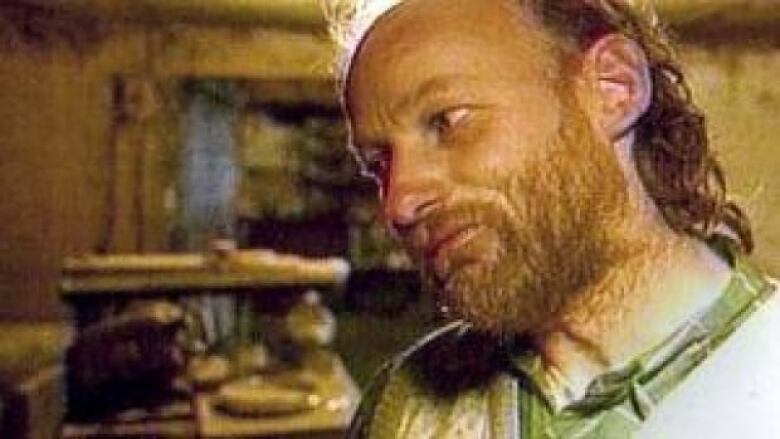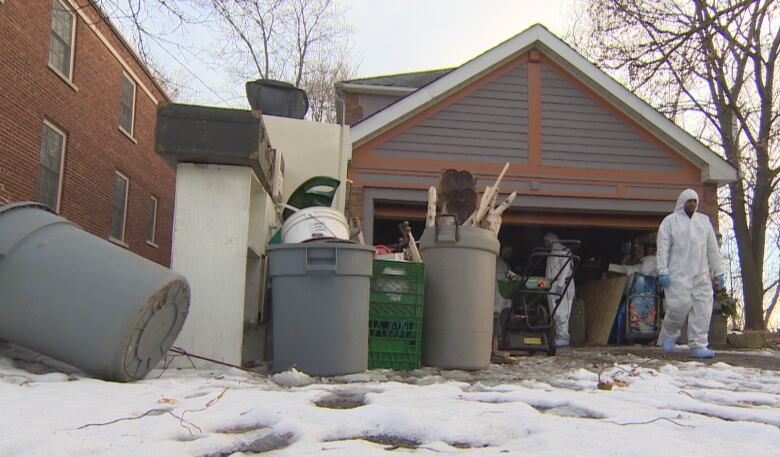Toronto alleged serial killer case draws parallels to Robert Pickton
Serial killers 'cunning and crafty,' but few clinically insane; they just enjoy hurting people, expert says

At first hesitant to use the term, police are now clearly calling the case of Toronto landscaper Bruce McArthur, who is charged with killing five men, a serial killer case while some crime experts are drawing parallels with notorious B.C. serial killer Robert Pickton.
When Toronto police first announced last week that McArthurhad been charged in the deaths of two men, they skirted the subject of whether or not the crimes he was accused of could be defined as serial killings, saying that was a media definition.
Police had been leading an investigation into the disappearances ofthree men from Toronto's Gay Village between 2010 and 2012 but had resisted calls from some in the community to link the disappearances to a potential serial killer.
But on Monday, aspolice announced more charges had been laid,Det.-Sgt HankIdsingsaid unequivocallythat the crimes wereindeed the work of a "serial killer" and that Toronto police had "never seen anything quite like this with the number of crime scenes that we have to process."
- Here's what we know about man charged with serial killings
- What we know so far about alleged serial killer's victims
McArthur, 66, who had already been charged in the deaths of SelimEsen, 44,and Andrew Kinsman 49, who disappeared from downtown Toronto last April and June, respectively, faces three additional first-degree murder charges in the deaths ofMajeed Kayhan, 58,Soroush Mahmudi, 50, and Dean Lisowick, 47.
None of the chargeshas been proven in court.
The three additional counts were announced asinvestigators also revealed that they discovered dismembered remains in the bottom of large planters after searching a property at Mallory Crescent in midtown Toronto that was linked to the self-employed landscaper.
Investigators arescouring about 30 Toronto properties to which McArthurhad access, believing more remains may be found.

The details of the case revealed so far have prompted some to point to similarities betweenMcArthur andPickton, whowas convicted in 2007 of six counts of second-degree murder after the remains or DNA of 33 women were found on his Port Coquitlampig farm, about 25 kilometres east of Vancouver. He was suspected of targeting sex workers and other vulnerable women on Vancouver's Downtown Eastside, whose families accused the police of neglecting the alarm bells raised about the number of women going missing in the area for years.
Their impulses are so strong and at some point they're unable to stave them off anymore, and then they begin acting out.- Jooyoung Lee, sociologist
"The parallels with the Picktoncase are obvious in some cases," said criminologist and Western University professor Michael Arntfield. "We have an offenderwho is operating within a tight area, very specific geographically, targeting marginalized population that has a bit of aconflictedrelationship withthe police in some cases."
As well, both Pickton and the suspect hadaccess to properties where people can be made to disappear and dismembered to affect that disappearance, he said.
'Very cunning and crafty'
"The idea that police are connecting potential multiple disappearances to a single person and finding clues all around them we saw something quite similar to this in the Robert Picktoncase, where [Pickton] used his farm as a way to hide the remainsof his victims," saidJooyoung Lee, a University of Toronto associate professor of sociology who specializes in serial killers."
When it comes to serial killers hiding evidence, they "are very cunning and crafty," Lee said.
"They don't want to get caught, and they go to great lengthsoften to make sure that they can conceal the murders that they've committed," he said.
Some serial killers do take pleasure in dismembering and torturing their victims, and that's very much part of their killing ritual, he said.
Serial killer Jeffrey Dahmer, for example, kept the remains of his victims as trophies, and said he felta great sense of peace when he saw the body parts of those he killed, Lee said.
Hiding evidence
But there are some serial killers who go through this process just to try and discard the bodies. For example, Picktonfed the remains to pigs on his pig farm. Gary Ridgway, the Green River Killer, would dump bodies in the Green River in WashingtonState. John Wayne Gacy, one of the most notorious serial killers in U.S. history, hid his young victims underneath his house in a crawlspace.
"In those cases, it was about hiding evidence that could potentially implicate them as a serial killer," Lee said.
Arntfield said the way the victims were disposed in Toronto their transportation and concealment either through obliteration, dismemberment or burial of a body "speaks to an offender who has been honing this for some time."
Typically, serial killerswill also use their occupation as a way to acquire victims and will use their time at work to scout locations, Arntfield said.
"One of the things I look at is the nexus between occupationand opportunity in serial murder," he said.
"These are allegations, but if proven to be true, itwould appear McArthurused access to these locations and the equipment to help dispose of these victims."
But Arntfieldsaid 66-year-oldMcArthur doesn't fit the known age demographic for serial killers. Serial murder, he said, has widely been thought to be limited to males 18 to 26 and that by 35, offenders are "aging out."

If McArthuris found guilty, it would mean he either started relatively late for a serial killer, or his crimes go back several decades, he said.
As for the motivations of serial killers, Lee saidthey vary. Some enjoy the act of killing and find gratification in the power and absolute control over another person.
Othersdon't likethe act of killing but instead enjoy torturing or just having somebody as a personal slave, he said.
What they all have in common is they "enjoy the process of hurting other people and that it gives them gratification. It gives them psychic relief," Lee said.
'Impulses are so strong'
Few arefound to be clinically insane or suffering from psychosis, and they dounderstand the difference between right or wrong, Lee said.
"But their impulses are so strong and at some point they're unable to stave them off anymore, and then they begin acting out."
There's also wide variation in their social skills, meaning they can range from a complete loner, totally withdrawn, to those who are Ted Bundy-like extroverts andquite gregarious.
"Popular media like movies tend to create and rely on very narrow caricaturethat actually sort of misleads people, because we start to look for people who match like a Hannibal Lecter or Dexter or something like that. But that's not necessarily a sign of a serial killer."
With files from Natalie Nanowski












_(720p).jpg)


 OFFICIAL HD MUSIC VIDEO.jpg)
.jpg)



























































































